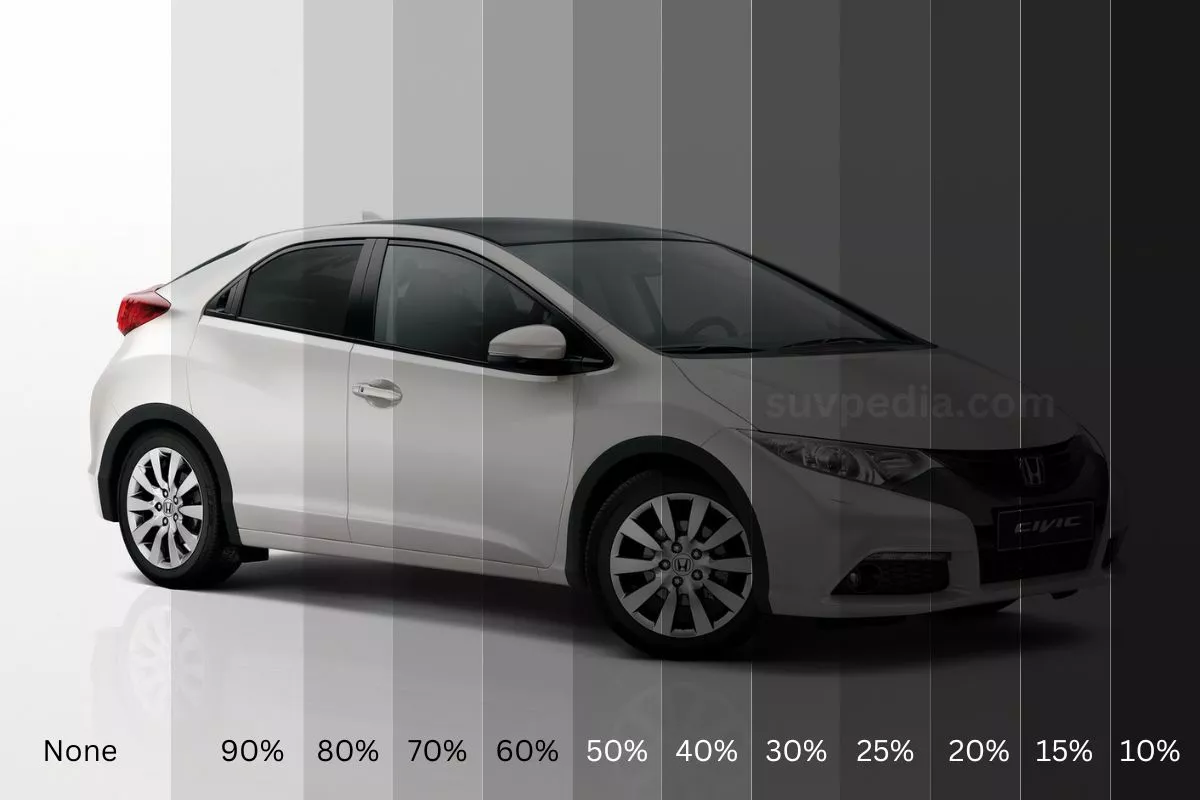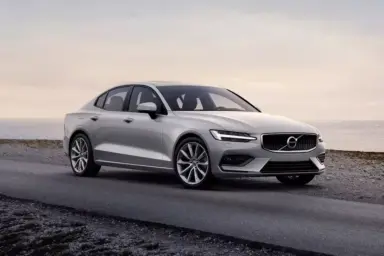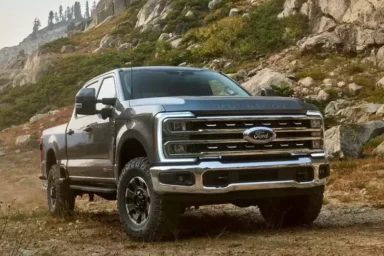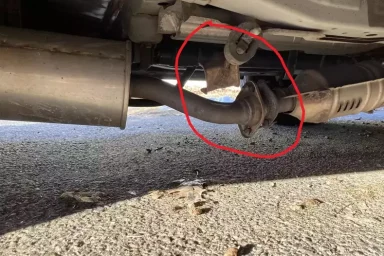Tinted windows shield you from the sun’s glare, increase your privacy, and offer your vehicle a more stylish appearance.
While window tinting is largely a matter of personal preference, there are legal implications to consider.
Table of Contents
Does Honda put tint in windows?
Honda lineup comes with several standard features, including window tinting. That doesn’t appear like window tint; thus, you can’t remove it by peeling it off. It’s completely permeated the glass and become firmly rooted there.
There is a wide variety of colors available for factory tints, although Honda typically utilizes green and black on windows, with some bluish tints thrown in for good measure.

What Windows Tint Percentages Should I Get? 45% or 35%
Like most other makes and brands, Honda’s factory window tint is perfectly legal in the range where the percentage of window tint is regulated.
Honda’s tint percentage ranges from 20% to 45%, depending on the specific model. That means the windows let in 20–45 percent of ambient light but reflect 55–80 percent of it.
However, the precise window tint percentage varies from state to state due to regulatory differences.
In accordance with local law, you can negotiate the level of window tint with your automobile dealer before making a purchase.
So, 35% or 45%?
Note that the proportion of window film varies from 5 to 90 percent; the lower the percentage, the darker the film. Since just 20% of available light can reach the vehicle, it’s inside will appear darker than 50% of the outside.
When considering privacy and visibility, a lesser proportion will provide more darkness. A 35% tint is a great option if you want to give your car an upscale appearance.
There, the absence of light at night is not a problem. When it comes to secrecy, this proportion won’t be cut because of the transparent nature of the material.
The ideal level of seclusion is at or below 20%, although this is strictly limited to rear windows.
If you don’t need complete darkness, a tint of 45% is perfect. Optimal protection from the sun’s heat and ultraviolet rays is provided.
The hue blocks out half of the light, drastically lowering visibility. Furthermore, it lessens both glare and eye strain. A window tint of 45% is recommended for driver safety.
It’s crucial to think about the climate and other environmental factors in your area when selecting a window tint. If you live in a particularly sunny region and keeping cool is a top priority, I recommend going with 45%. If aesthetics are more important than function, a 35% tint percentage is ideal.
How Much Does It Cost to Tint Windows?
There may not be many choices for window tinting from the manufacturer, but aftermarket solutions are available. Both its UV resistance and its aesthetic appeal can be improved.
Your windows can be tinted at the dealership or by a professional tint film installer, with the latter being more affordable.
Costs range from $50 to $1,000 for window tinting services when tinting a Honda. You’ll find prices for non-reflective, generic tint films in this spectrum.
Types of Window Tints
Window tint comes in different varieties, including:
Dyed Tint
The Use of a Tinted Dyestuff Dye tinting is commonly employed for aesthetic rather than practical purposes. It has an impenetrable, pitch-black color on the outside.
The dyed color doesn’t add any practical value. While it prevents the sun’s glare, it does not shield your eyes from harmful ultraviolet radiation.
This window film’s benefits include its reasonable cost, attractive design, and high level of privacy. The negative aspects are that it is unreliable, easily damaged, and loses its color with time.
Metalized Tint
Metalized window tints are superior to dyed window tints in almost every way, but they are more expensive. Thin layers of reflective metal are applied to the film of the tint in order to create these.
Hybrid Tint
Shades of a Hybrid When layers of colored film and metal film are fused together, hybrid films are produced.
Metal film’s practicality is combined with the sleek minimalism of a dyed tint.
Hybrid tints are excellent for blocking harmful ultraviolet rays and offering a practical, in-between amount of darkness and reflectivity.
Carbon Tint
Nano-sized carbon particles and no dyes make up a carbon window tint. Due to their distinctive matte appearance, they are a classy alternative to glitzy metallic or dyed hues. They’re pricey but worth it for the UV and infrared protection they offer.
Ceramic Tint
Although it is the most costly option, premium window film is worth the extra money because of its added security and aesthetic appeal.
Ceramic window tints are extremely effective in blocking off infrared, ultraviolet B, and UVA light. They claim to block up to 99% of UV light, which is very impressive. Sometimes, this can cut the car’s interior temperature in half.
Crystalline Tint
Coloration Crystalline These are totally see-through tints that offer no protection from prying eyes.
While not as effective as ceramic or carbon tints, they nonetheless block a significant amount of UV and infrared radiation.
Frequently Ask and Questions
Do Honda Civics Have Factory Tint?
The factory tint on a Honda Civic is roughly 70%, letting about 70% of light into the cabin.
Its capacity to block heat and UV rays is poor because only around 30% of the light is blocked; you will need an aftermarket to gain superior windows-to-tint benefits.
How Long Does It Take to Tint a Honda Civic?
The Honda Civic is a compact automobile, so window tinting only takes approximately 30 minutes.
Does Honda HR-V Have Tinted Windows?
Tinted windows are just one of many lovely extras that come standard on the Honda HR-V.
Does Honda CR-V Have Tinted Windows?
Windows are tinted in the Honda CR-V as standard equipment on the EX, EX-L, and Touring trim levels.
Should Window Tint Be Applied Inside or Outside?
Depending on the circumstances, window tinting can be installed either on the inside or the outside of a building. It’s not just one or the other, but both have it installed. However, film tinting is typically done indoors.


